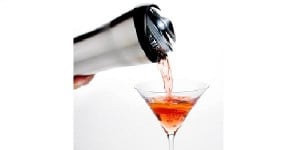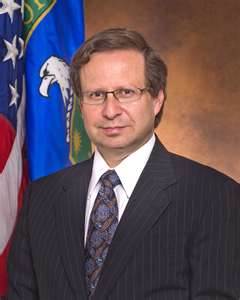I think the whole cold fusion community, scientists, researchers and advocates alike, were outraged by the cold fusion hit piece that was recently posted on Scientific American. Believe me, I was as perturbed as many of the rest of you. I had an article full of righteous indignation and anger but never posted it. While I am still perturbed, a couple of days of reflection have allowed me to gain a bit of perspective.
Scientific American is the oldest continuously-published monthly magazine in the United States. It has been in circulation for 167 years. Many famous scientists, including Einstein, have contributed articles to the publication during it’s over century and half of existence. However, its reputation has been in a slow and steady decline for the past half-century. The decline in its once stellar reputation has been even steeper in the last decade, where its contributors have taken questionable stances on a variety of issues, including commentary on political matters like the Iraq War. The publication also did not endear itself to anyone when it raised its college library subscription rate by 500% in 2009. No, this is not your great grandfather’s Scientific American, any more than cold fusion is the kind of nuclear power your mother told you about.
- Cold Fusion Now Bumper Sticker
It is in this environment that we find the quasi-scientific blog of Jennifer Ouellette’s, Cocktail Party Physics. That name alone should tell us that this is not really an overly serious endeavor. The author herself admits her forte is “finding quirky connections between physics, popular culture, and the world at large.” She has written several books in this vein, one of which extols her bravery in overcoming her fear of calculus. On the other hand, most serious about science overcome their fear of calculus by the time they graduate high school. Cold Fusion Now’s own Ruby Carat would think it immodest to call herself a serious scientist but has an academic background in physics and a graduate degree in mathematics. She obviously overcame any “fear of calculus” many moons ago and didn’t think it was such a big deal that she had to write a book about it. If Ouellette is gracious enough to accept Ruby’s invitation for a chat about her article over cocktails, I hope it is live streamed over the Internet. That is one conversation I would like to be privy to.
Yet, Jennifer’s approach to science and its relation to the world at large would have made her a perfect candidate to give us a review of “The Believers.” It would have been right up her alley. Instead, when someone mentioned the film to her, she inexplicably choose to write a 3000 word article espousing every myth and sophomoric joke about cold fusion perpetuated for the last 20 years, and never actually bothered to see the film. A bit curious to say the least.
The question is why? What was the purpose and point of doing this as a response to the release of a film that won top honors at the Chicago Film Festival? Well, there are some interesting theories about that. For example, Dr. Michael McKubre suspects the article is a “concerted effort by several leading members of the opposition.” This according to comments made recently by Jed Rothwell on Vortex-l. Some might dismiss that notion as a cock-eyed conspiracy theory but, upon further review, there might be something to that suspicion.
For example, Ouellette’s husband is Sean Carroll, a senior research associate in the Department of Physics at the California Institute of Technology, or CalTech. Yes, that would be the same CalTech whose failed replication attempts were largely conducted before many details of the original experiments have been released (as was the case with many reported replication failures). It was CalTech physicist Steven Koonin that infamously said that Fleishmann and Pons were “psychotic and delusional.” Indeed, the anti-cold fusion bias runs deep at CalTech. One can imagine that Jennifer has heard many cold fusion stories over the years from her CalTech physicist husband and his colleagues.
- Steven Koonin
It should also be noted that Ouellette writes a column for a publication of the American Physical Society, the APS News, entitled “This Month in Physics History.” In an interview on the “The Late Late Show with Craig Ferguson,” this author describes the nexus and ongoing association with the mainstream physics establishment:
“I was actually a freelance writer in New York City trying to make a living , and it turns out the physicists would pay me. It is really as simple as that. They needed someone who could put physics concepts into plain English that would be able to appeal to a broader audience.”
http://youtu.be/4J-8a2NPHUE
As any student of literature knows, many of the earliest written stories in human history where myths handed down through generations via the oral tradition practiced by story tellers. The individual who actually put these myths to paper did not have to vouch for their accuracy or truthfulness. That was not their role. It seems that our “recovering English major,” Jennifer Ouellette, is playing the role of modern scribe for the myths of the mainstream physics community regarding cold fusion. This may explain why she shut down the comment section of her blog with the quickness. She was not able to appropriately counter the evidence provided that contradicted the 20 year old myths she strung together in her article. As pointed out previously, and as reiterated in the interview above, we are talking about an individual who, basic calculus aside, is “terrified of math and physics.” Having to talk about things in ways that require critical thought and examination of all the evidence probably sends her running for her cocktail shaker or the neighborhood pub.
As the saying goes, when considering praise or criticism, consider the source. Yes, I know, it is easier said than done. For those who have done their research, to hear old myths repeated with ignorant certainty as scientific truths is infuriating. But we must keep in mind that if a 20 year old myth, regurgitated by a writer who is “terrified of math and physics,” is all there is to worry about, we are in pretty good shape. So, sit back, enjoy a cocktail of your own, and try not to let scientific fundamentalists and the ignorant make you see red. I have an inkling that very shortly (within months), there will be a significant LENR disclosure and those who continue to cling to tired old myths will look as foolish as the cocktail party attendee who has had one too many and ends up donning a lamp shade on their head.




